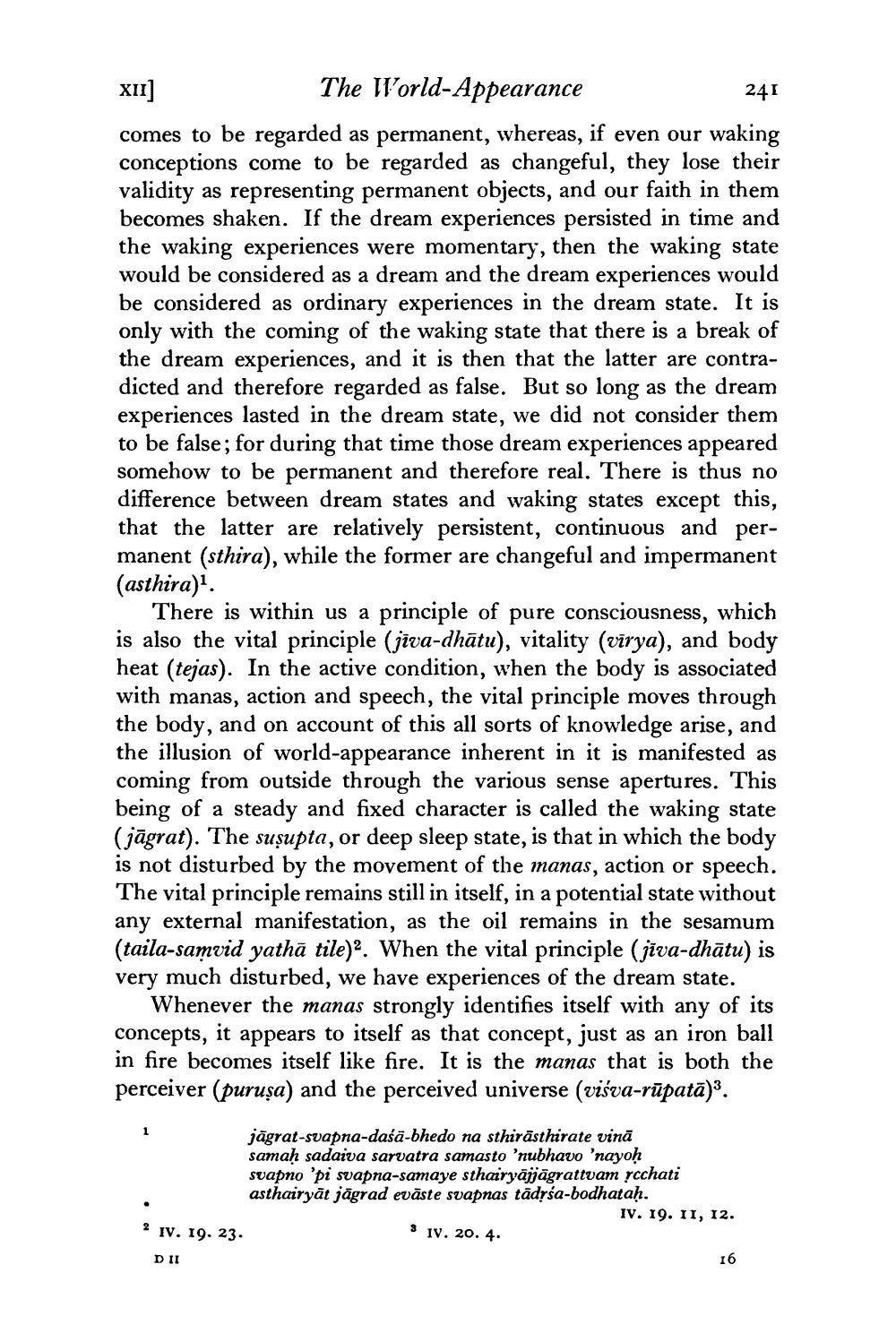________________
XII]
The World-Appearance
comes to be regarded as permanent, whereas, if even our waking conceptions come to be regarded as changeful, they lose their validity as representing permanent objects, and our faith in them becomes shaken. If the dream experiences persisted in time and the waking experiences were momentary, then the waking state would be considered as a dream and the dream experiences would be considered as ordinary experiences in the dream state. It is only with the coming of the waking state that there is a break of the dream experiences, and it is then that the latter are contradicted and therefore regarded as false. But so long as the dream experiences lasted in the dream state, we did not consider them to be false; for during that time those dream experiences appeared somehow to be permanent and therefore real. There is thus no difference between dream states and waking states except this, that the latter are relatively persistent, continuous and permanent (sthira), while the former are changeful and impermanent (asthira)1.
There is within us a principle of pure consciousness, which is also the vital principle (jiva-dhātu), vitality (virya), and body heat (tejas). In the active condition, when the body is associated with manas, action and speech, the vital principle moves through the body, and on account of this all sorts of knowledge arise, and the illusion of world-appearance inherent in it is manifested as coming from outside through the various sense apertures. This being of a steady and fixed character is called the waking state (jāgrat). The suṣupta, or deep sleep state, is that in which the body is not disturbed by the movement of the manas, action or speech. The vital principle remains still in itself, in a potential state without any external manifestation, as the oil remains in the sesamum (taila-samvid yathā tile)2. When the vital principle (jīva-dhātu) is very much disturbed, we have experiences of the dream state.
Whenever the manas strongly identifies itself with any of its concepts, it appears to itself as that concept, just as an iron ball in fire becomes itself like fire. It is the manas that is both the perceiver (puruşa) and the perceived universe (visva-rūpatā)3.
1
2 IV. 19. 23.
DII
jāgrat-svapna-daśä-bhedo na sthirästhirate vinā samaḥ sadaiva sarvatra samasto 'nubhavo 'nayoh svapno 'pi svapna-samaye sthairyajjāgrattvam rcchati asthairyāt jāgrad eväste svapnas tādṛśa-bodhataḥ.
3 IV. 20. 4.
IV. 19. 11, 12.
241
16




